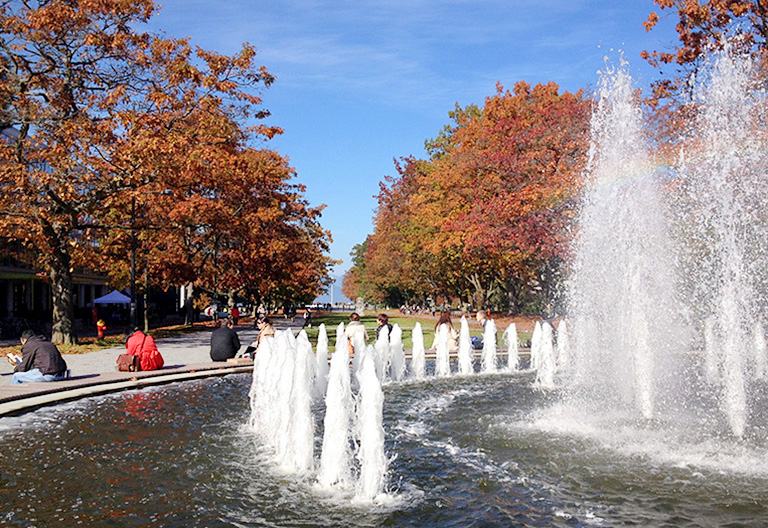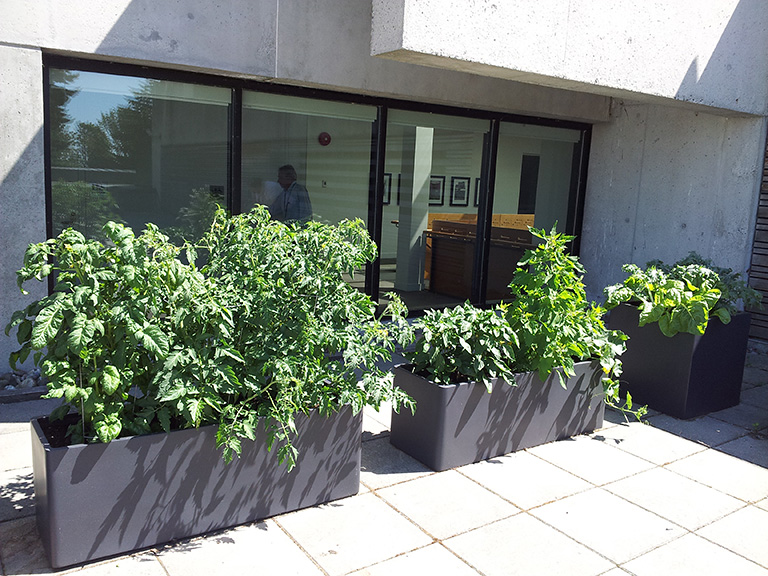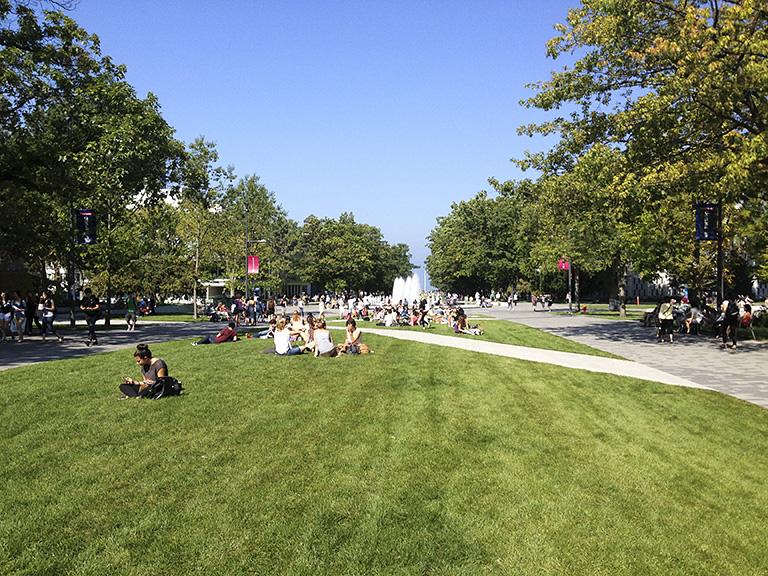Small Roots, Big Routes: UBC Goes Green(er)
Many other universities have their ‘philosophers’ walk, a leafy – but typically short – path to stroll and muse . . . so why not widen it up, open for all? Meanwhile and closer to hand, literally, many people ease away stress by tending to their backyard gardens.
At UBC these complimentary concepts – small and intimate, large and inclusive – underline the “push to the green” to enhance staff, students and faculty’s well being.
The small scale: fertilized by a $2,500 grant from the Healthy Workplace Initiative Program (HWIP), the staff and faculty of the Museum of Anthropology gathered the materials and put together outdoor garden boxes and planters on the secluded third-floor patio. When they need a moment to unwind the mind, they stroll out and put the hands to work.
Tomatoes, lettuce, Swiss chard, kale, organic edibles; calming work for the hands, food for the soul (and stomach). The MOA gardening bug has spread its roots. Over at the Anthropology and Sociology (ANSO) building, staff saw the results and promptly set up their own garden.
The large scale: the $16.6-million ‘Pedestrian Campus’ transformation of the area embracing the four historic roads – Main Mall, University Boulevard, Memorial and Agricultural roads – the core of the original Vancouver campus circa 1905. The money draws from the development levies applied to the construction of market housing on campus.
Completed in 2013 and affecting 1.04 million square feet of outdoor space and the thousands of people who traverse it each day, the revitalization replaced decades of vehicle encroachment – curbs, asphalt, parking – with foot-friendly walkways and universal accessibility, carefully placed ‘impromptu’ seating/chatting areas, water features, rain gardens to ‘harvest’ and gently reuse the five billion liters of precipitation that falls annually), bike racks, unobtrusive lighting, bio-vales – and lots of trees, greenery and ‘sit and watch the clouds’ grassy areas.
In 2013 the revitalization of the ‘Pedestrian Campus’ was recognized by the international Society for College and University Planning (SCUP), receiving the prestigious honour award for ‘excellence in landscape architecture’.
“That’s good,” understates Dean Gregory, UBC landscape architect, noting that the SCUP award not only recognizes the revitalization of the historic spines of the campus but effectively affirms and “spoke to” UBC’s Public Realm plan. Introduced in 2009, the comprehensive plan involves multiple projects across the entire central campus.
“When I came here five years ago,” recalls Gregory, “it was kind of a ‘very nice surroundings’ but kind of a mess.”
That’s all changed. It’s remarkable what a few years of focused effort, funding, careful planning and unobtrusive execution has done.
“These projects have cumulatively so far, been nothing short of transformative to the campus in how it looks, how people perceive it and how it’s used.”
Read more about
Outstanding Work EnvironmentThis story also illustrates our commitment to:
SustainabilityRelated Content
“These projects have cumulatively so far, been nothing short of transformative to the campus in how it looks, how people perceive it and how it’s used.”
Campus
Vancouver

